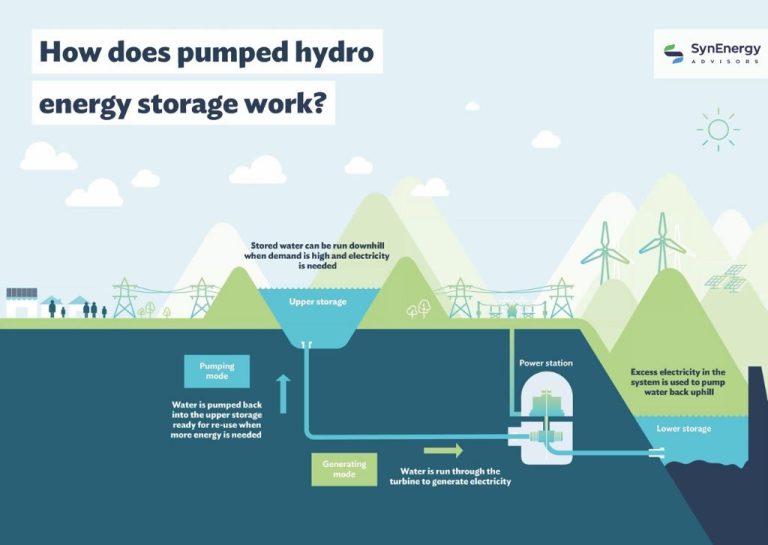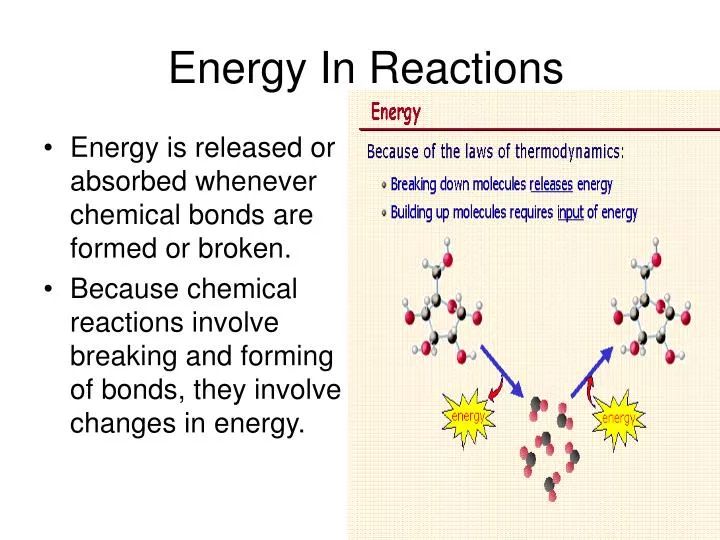What Chemical That Captures Energy For Photosynthesis?
Photosynthesis is a vital process that occurs in plants and some bacteria, whereby light energy is converted into chemical energy in the form of glucose. This glucose can then be used by plants for growth and other processes. The importance of photosynthesis can’t be understated – not only does it provide food for plants, it also supplies the oxygen that makes life possible on Earth.
At the heart of photosynthesis is a green pigment called chlorophyll. Found in the chloroplasts of plant cells, chlorophyll absorbs light energy which is used to convert carbon dioxide and water into oxygen and glucose. In this way, chlorophyll facilitates photosynthesis by harnessing the energy from sunlight.
This article will explore what chlorophyll is, how it captures energy for photosynthesis, the different types of chlorophyll, and more.
What is Chlorophyll?
Chlorophyll is a green pigment found in plants, algae and cyanobacteria that allows them to absorb energy from sunlight. It plays a critical role in photosynthesis, the process plants use to convert light energy into chemical energy needed to fuel plant growth and development. The word chlorophyll comes from the Greek words chloros, meaning “green”, and phyllon, meaning “leaf”.
The chemical structure of chlorophyll is complex, but can be summarized as a chlorin ring with a long hydrophobic phytol chain. The chlorin ring contains magnesium at its center, and can reversibly bind to oxygen and other small molecules. There are several different forms of chlorophyll, but chlorophyll a and chlorophyll b are the two primary types found in higher plants and green algae.
When chlorophyll absorbs light energy, it excites electrons and initiates the photosynthesis process. Specifically, chlorophyll absorbs violet-blue and orange-red light wavelengths while reflecting green light wavelengths, which gives chlorophyll – and green plants – their characteristic green color.
How Chlorophyll Captures Energy
Chlorophyll captures energy from sunlight through a process called photosynthesis. When sunlight reaches the leaves of a plant, the chlorophyll molecules absorb the light energy. The absorption of light causes electrons in the chlorophyll molecules to become excited and jump to a higher energy level.
Specifically, chlorophyll absorbs light most strongly in the blue and red regions of the visible light spectrum. The blue light has enough energy to be absorbed by chlorophyll and boost electrons to a higher energy level. The red light, while lower in energy, also contributes to this excitation process.
Once the electrons are excited to a higher energy state, the captured light energy can be used to power chemical reactions that convert carbon dioxide and water into oxygen and energy-rich glucose molecules. This is how chlorophyll acts as an energy-capturing pigment and allows plants to undergo photosynthesis.
Chlorophyll Variations
Chlorophyll does not just come in one form. There are several variations that play an important role in photosynthesis.
Chlorophyll a is the primary pigment that captures light energy and converts it into chemical energy during photosynthesis. It is found in all photosynthetic organisms such as plants, algae and cyanobacteria.
Chlorophyll b is an accessory pigment found mainly in land plants and green algae. It absorbs light at different wavelengths than chlorophyll a and passes the energy onto chlorophyll a.
Plants also contain various accessory pigments such as carotenoids and xanthophylls. These pigments absorb light energy at different wavelengths than chlorophyll and expand the range of light that can drive photosynthesis. Common accessory pigments include beta-carotene in orange fruits and vegetables, lycopene in red fruits and vegetables, and anthocyanins that give leaves their red, purple and blue colors.
The mixture of chlorophyll and accessory pigments allows plants to absorb light across the visible spectrum, powering the complex chemical process of photosynthesis.
Chlorophyll Production
Chlorophyll is produced within the chloroplasts of plant cells. The biosynthetic pathway involves a number of enzymatic steps that convert simple molecules into the complex chlorophyll molecule.
The starting molecule is glutamate, which is converted into 5-aminolevulinic acid (ALA), the first committed intermediate. ALA is then converted into protoporphyrin IX through a series of enzymatic steps. Finally, a magnesium ion is inserted into protoporphyrin IX by the enzyme magnesium chelatase to produce chlorophyll.
The chlorophyll biosynthetic pathway requires both nuclear and chloroplast genes. The initial steps occur in the cytoplasm and mitochondria while the later steps take place in the chloroplast. The production of chlorophyll is carefully regulated to prevent accumulation of phototoxic intermediate molecules.
Chlorophyll Breakdown
Chlorophyll does not remain intact for very long in plants. As leaves age or experience stress, chlorophyll begins to degrade and break down through enzymatic reactions. There are several enzymes involved in chlorophyll breakdown, including chlorophyllase, heme oxygenase, and magnesium dechelatase.
Chlorophyllase specifically catalyzes the hydrolysis of chlorophyll, separating its phytol tail from the chlorophyll molecule. Without its phytol tail, chlorophyll breaks down into colorless tetrapyrroles. These colorless molecules retain the original chlorophyll ring structure but cannot absorb light energy.
The most visible sign of chlorophyll breakdown is autumn leaf color change. The bright green summer foliage shifts to vibrant yellows, oranges, and reds as chlorophyll disappears. Carotenoid pigments that were present in the leaf but masked by chlorophyll are unveiled and shine through. Red anthocyanin pigments may also accumulate in some plant species as part of senescence and contribute to the foliage display.
While the color change is aesthetically pleasing, chlorophyll breakdown indicates the leaf is dying. It precedes nutrient resorption, leaf drop, and plant dormancy in perennial species. Annual plants breakdown their chlorophyll as the final act before death.

Chlorophyll Deficiencies
Chlorophyll deficiencies can occur due to a variety of causes that prevent the plant from properly producing or maintaining chlorophyll. Two of the most common causes are disease and lack of nutrients.
Certain plant diseases can directly attack the enzymes needed for chlorophyll synthesis. These diseases prevent chlorophyll from being produced in the first place. Other diseases break down chlorophyll or damage the plant parts that contain it, leading to a loss of chlorophyll over time.
Lack of nutrients, especially nitrogen, magnesium, and iron, can also impair chlorophyll production and maintenance. Nitrogen is a component of chlorophyll molecules and is needed for their synthesis. Magnesium sits at the center of every chlorophyll molecule. And iron is required by one of the main enzymes that produces chlorophyll precursors. Without adequate levels of these nutrients, chlorophyll cannot be made optimally.
Chlorophyll deficiencies have a range of negative effects on plants. With less chlorophyll, plants have a reduced capacity to harvest sunlight needed for photosynthesis. This leads to slower growth rates and lower productivity. Deficiencies during critical growth stages can also reduce crop yields and quality.
Visible symptoms of chlorophyll deficiencies include light green or yellowing leaves due to lower chlorophyll levels. This often starts in the older leaves. Plants may also display interveinal chlorosis, where the leaf veins remain green but tissues between them turn yellow. Severe deficiencies can result in necrotic lesions and even plant death.
Commercial Uses
Chlorophyll has some interesting commercial uses, primarily as a natural food coloring and in cosmetics.
As a food coloring, chlorophyll provides a green pigment and is used to color foods like drinks, desserts, candies, ice cream, and more. It provides a natural alternative to artificial food dyes. Chlorophyll as a food coloring is approved by the FDA and labeled as Natural Green 3. It is allowed for use in organic foods.
In cosmetics, chlorophyll can be used in facial scrubs, lotions, and other products. It has antioxidant properties that are said to help reduce damage from sun exposure. Some think chlorophyll also has anti-aging effects and can help improve skin health. Additionally, the green pigment provides a natural tint. However, more research is still needed on the efficacy of chlorophyll in cosmetics.
Recent Research
Scientists continue to make new discoveries about chlorophyll that lead to innovative applications. Here are some of the most exciting recent advances:
Understanding the Chlorophyll Molecule
Researchers have used advanced spectroscopy and quantum mechanics modeling to better understand the structure and function of chlorophyll molecules. These studies have revealed new insights into how chlorophyll’s molecular structure absorbs light energy and transfers it during photosynthesis.
Bioinspired Solar Cells
The light-harvesting abilities of chlorophyll have inspired scientists to mimic its properties in organic solar cells. By assembling chlorophyll-like molecules on electrode surfaces, researchers have developed biomimetic solar cells that can capture a wider spectrum of light. Further optimization of these bioinspired designs could lead to more efficient solar energy conversion.
Solar Fuels from Artificial Photosynthesis
Chlorophyll is also being investigated for its potential in artificial photosynthesis – using sunlight to drive chemical reactions that produce clean fuels. Scientists are exploring ways to use chlorophyll-containing proteins and nanomaterials to split water into hydrogen and oxygen or reduce CO2 into carbon-based fuels. Advances in artificial photosynthesis powered by chlorophyll could enable sustainable fuel production.
Overall, new insights into natural chlorophyll are leading to a plethora of technological innovations that harness the power of the sun.
Conclusion
Chlorophyll is the green pigment that captures energy from sunlight during photosynthesis. This crucial molecule allows plants and algae to convert light energy into chemical energy and sustain nearly all life on Earth. In this article, we explored what chlorophyll is, how it absorbs light, the different types of chlorophyll, how it is produced and broken down in plants, chlorophyll deficiencies, commercial uses, and recent research on improving crop growth through optimizing chlorophyll levels. Some key points covered include:
– Chlorophyll’s specialized molecular structure makes it uniquely capable of harnessing the Sun’s energy and converting it into a form living organisms can utilize through photosynthesis.
– Variations in chlorophyll molecules, like chlorophyll a and chlorophyll b, allow different types of plants and algae to absorb light energy at specific optimal wavelengths.
– Chlorophyll is continuously broken down and replenished in plant cells through complex biosynthesis pathways.
– While chlorophyll deficiencies can inhibit plant growth and crop yields, strategies like selective breeding, genetic modification, and optimized fertilizer use can maximize chlorophyll content and photosynthetic activity.
As the essential conductor of photosynthesis, chlorophyll enables plants to convert immense amounts of solar energy into living biomass. Through this process, chlorophyll ultimately sustains almost all life on our planet and makes complex ecosystems possible. Understanding and optimizing chlorophyll production in crops and native plants remains an active and important area of botanical research.





